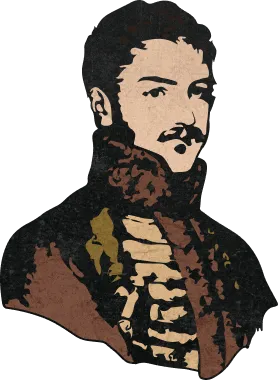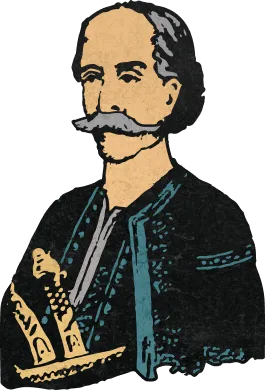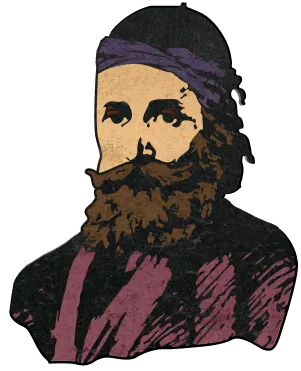He was a prominent figure among the fighters of 1821 in Crete. Together with his brothers, Georgios and Ioannis, he played a very important role in organising and spreading the Revolution on the island.
He was born in 1769 in Asomatos, Agios Vasileios and his secular name was Michael. He was named Melchisedek in 1810, when he was ordained as a hieromonk at Preveli Monastery, and just seven years later he was appointed Hegumen of the Monastery.
During the pre-revolutionary period he was initiated into the Philike Hetaireia and, shortly after the outbreak of the Revolution in the Peloponnese, he and his brothers established the first armed forces of the Struggle on Crete. According to local tradition, he raised the first revolutionary flag at Ai Giorgis Methystis, informally declaring the Revolution on the island on May 24th, 1821. He then led many victorious battles that broke out mainly in the hinterland of Rethymno, but also in Chania. Moreover, in May 1822, he participated in the 3rd Assembly of the Cretans, in Armeni, Chania, where he was appointed as caretaker under the General Prefect of Crete, Michael Komninos Afentoulief.
"Tsouderogoumenos", as he was called, died heroically in Polemarchi, Chania on February 3rd, 1823, during a battle for the Tower of Kissamos.
The Holocaust at the church of ‘Panagia Lampini’
G. Tsouderos on the side of Dalianis – The battle at Frangokastello
The events at Panagia Odigitria
The fall of the Four Saintly Melampian Martyrs and fighters


